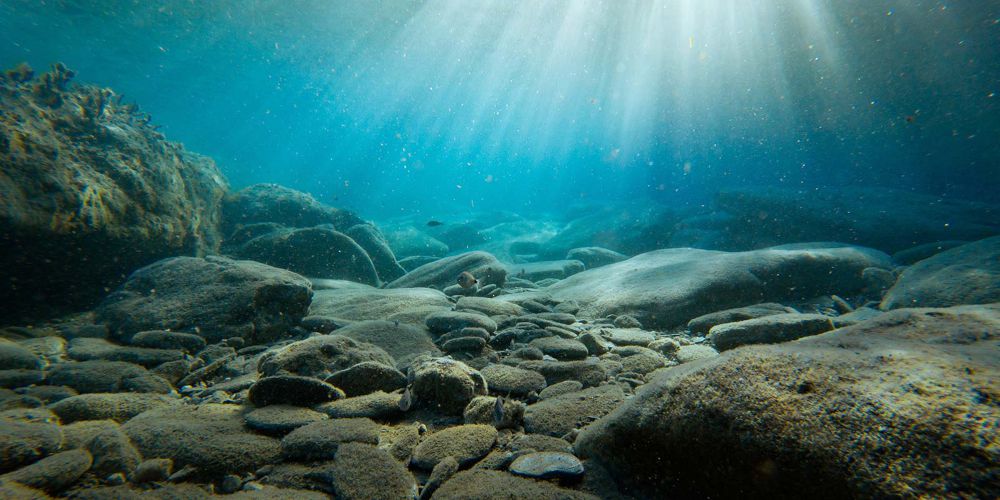I like planets. I've previously written about planets we wouldn't want to live on, planets covered in cities, and even the crazy plants you can find on such planets—and what to do if you run into one of them.
A big reason why is that sci-fi worlds are just plain interesting. One of the planet "types" that we haven't covered yet are waterworlds.
A planet that is either comprised entirely of deep oceans or shallow seas, the "waterworld" is part imagination, part science brought to the extreme, and part cautionary tale due to global warming.
But what are some of the most well-known waterworlds in sci-fi? Well, let's take a look.
1. Waterworld (Waterworld)
The eponymous Waterworld gets its name from the 1995 movie, and it is here that the modern idea of ocean planets really took off.
Based on a 1986 screenplay, Waterworld is a bleak future-version of Earth where the polar ice caps have melted and the sea levels have risen by thousands of meters.
This rise in sea level has left the world covered in water. It's also given way to a complete restructuring of human society, which now lives on floating rafts and views long-ago solid land dwellings as a myth.
Waterworld is what we'd call a "cautionary tale" about our own world taken to the extreme: if global warming is not halted, this could happen.
And while this idea of the sea level rising might have seemed outlandish in 1995, rising oceans aren't so far-fetched now.
We're currently in the midst of a catastrophic climate shift. Scientists estimate that most coastlines will be under water or seriously affected by the year 2100, says National Geographic.
2. Kamino (Star Wars)
Star Wars gets mentioned a lot in these "different type of world" listicles, but to be fair Star Wars has a lot of planets—specifically planets with one type of terrain or climate.
Out of its many, many waterworlds, the most famous of these is Kamino—an aquatic planet in the Rishi Maze that first appeared in Star Wars: Episode II: Attack of the Clones.
Home to the Koaminoans who were tasked with building the clone army, this waterworld has a surface that is buffeted by massive storms. It's also home to some incredible creatures, including "air whales" called Aiwha. The Kaminoans use them as transport.
3. Manaan (Star Wars)
Next on the list of ocean planets associated with Star Wars—I swear, we'll only do two—is Manaan.
An Inner Rim planet that first appears in the video game Star Wars: Knights of the Old Republic, Manaan is home to the Selkath, who live in Ahto City: the only surface-dwelling structure on the planet.
A beautiful world with peaceful tides and lots of sun, Manaan contains a thriving ecosystem beneath its surface.
It's also the only known source of kolto, a miracle substance known for its healing abilities. The Selkath's stranglehold on this kolto production has made them very rich.
4. 2181 Despoina (Mass Effect)
Despoina is one of the lesser-known waterworlds, but its probably my favorite. A dark and stormy place named after a Greek Goddess, Despoina is home to the "Leviathans."
It's also a technological graveyard filled with crashed ships currently being pounded apart by the waves.
Your playable character, Commander Shepard, first finds Despoina in Mass Effect 3, when you're searching for clues on how to defeat the Reapers.
Once you dive beneath the surface, you find an ocean full of caves and bioluminescent plants. Here, hidden away from the rest of the galaxy, are where the Leviathans lurk: gigantic, sentient, squid-like creatures that are partially responsible for the rise of the Reapers.
5. Miller's Planet (Interstellar)
Lastly, we're going to give a special shoutout to Miller's Planet: a tidal ocean world featured in the hit movie Interstellar.
In the setup for this movie, crop desiccation has spread across the planet. Humans are starving. When the last viable crops begin to die off, ex-pilot Joseph Cooper is sent on a one-way space mission to search for habitable worlds near the black hole Gargantua.
One of the coordinates that Joseph checks out is a planet earmarked for exploration by the astronaut Miller, who has since gone missing. When Joseph goes down to the planet's surface, he finds a beautiful world covered with a shallow, waist-high ocean, along with the remains of Miller's ship.
At first he and his team are confused as to what's happened, but it soon becomes clear that Miller was killed by this seemingly benign ocean. The planet is wracked by thousand-foot tsunamis that are so destructive they make the surface unlivable. The team beasts a hasty retreat back to space.
We Hope You Like Swimming
These are just some of the waterworlds that inhabit the science fiction landscape, and with the way our own world is heating up we expect to see more of these planets pop up sometime soon.
After all, the sci-fi genre loves to comment on environmental and socio-political trends, and climate change is one of the biggest if not the biggest concern of our era.

